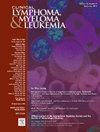新一代t细胞淋巴瘤测序的临床影响:单一机构经验。
IF 2.7
4区 医学
Q2 HEMATOLOGY
引用次数: 0
摘要
背景:由于基因表达谱和高通量下一代测序(NGS)的发展,对t细胞淋巴瘤(TCL)病理生物学的了解已经大大增加。然而,关于成熟t细胞淋巴瘤(TCLs)突变谱的真实数据是有限的,并且它们对临床决策的影响尚未报道。方法:在2021年1月1日至2023年7月1日期间,对组织病理学证实的t细胞淋巴瘤患者的活检和现有的NGS数据进行了一项单机构研究。报告的变异被分类为疾病相关或致病变异(DAV)或未知意义变异(VUS)。通过电子邮件对个别医生进行了关于NGS结果对患者下一步护理的影响的调查。结果:约94%的患者(n = 93)有≥1个变异;在71%的患者(n = 70)中发现至少1种致病变异或可能的致病变异。在90个独特基因中检测到变异,其中41%(37/90)具有疾病相关变异(DAV)。在本研究中,最常导致疾病相关变异的突变基因是TET2、RHOA、DNMT3A和TP53、IDH2和PLCG1。在接受调查的每位医生中,19%的患者将NGS结果纳入临床管理。结论:这项工作深入了解了NGS在t细胞淋巴瘤患者临床决策中的实际应用。考虑到NGS对预后的影响,治疗方案的评估,以及停止可能无益的治疗,这些发现支持NGS在t细胞淋巴瘤治疗中的重要作用。本文章由计算机程序翻译,如有差异,请以英文原文为准。
Clinical Impact of Next-Generation Sequencing of T-Cell Lymphomas: A Single Institution Experience
Background
The understanding of T-cell lymphoma (TCL) pathobiology has grown substantially due to gene expression profiling and high-throughput next-generation sequencing (NGS). However, real-world data on mutational profiles of mature T-cell lymphomas (TCLs) are limited, and their impact on clinical decision making has not been reported.
Methods
A single-institution study of biopsies from patients with histopathologically confirmed T-cell lymphomas and available NGS data between January 1, 2021, to July 1, 2023, was performed. Reported variants were classified as disease-associated or pathogenic variants (DAV), or variants of unknown significance (VUS). Individual physicians were surveyed via email regarding the impact of NGS results on next steps in patient care.
Results
About 94% of patients (n = 93) had ≥ 1 variants identified; at least 1 pathogenic variant or likely pathogenic variant was identified in 71% of patients (n = 70). Variants were detected in 90 unique genes with 41% (37/90) having disease-associated variants (DAV). The genes with mutations most frequently resulting in disease-associated variants in this study were TET2, RHOA, DNMT3A and TP53, IDH2, and PLCG1. NGS results were integral to clinical management in 19% of patients per physician survey.
Conclusion
This work gives insight into the real-world utility of NGS regarding clinical decision making for patients with T-cell lymphoma. Given the impact of NGS on prognostication, evaluation of therapeutic options, as well as cessation of potentially unhelpful treatments, these findings support the role of NGS as an important part in the management of T-cell lymphomas.
求助全文
通过发布文献求助,成功后即可免费获取论文全文。
去求助
来源期刊

Clinical Lymphoma, Myeloma & Leukemia
ONCOLOGY-HEMATOLOGY
CiteScore
2.70
自引率
3.70%
发文量
1606
审稿时长
26 days
期刊介绍:
Clinical Lymphoma, Myeloma & Leukemia is a peer-reviewed monthly journal that publishes original articles describing various aspects of clinical and translational research of lymphoma, myeloma and leukemia. Clinical Lymphoma, Myeloma & Leukemia is devoted to articles on detection, diagnosis, prevention, and treatment of lymphoma, myeloma, leukemia and related disorders including macroglobulinemia, amyloidosis, and plasma-cell dyscrasias. The main emphasis is on recent scientific developments in all areas related to lymphoma, myeloma and leukemia. Specific areas of interest include clinical research and mechanistic approaches; drug sensitivity and resistance; gene and antisense therapy; pathology, markers, and prognostic indicators; chemoprevention strategies; multimodality therapy; and integration of various approaches.
 求助内容:
求助内容: 应助结果提醒方式:
应助结果提醒方式:


